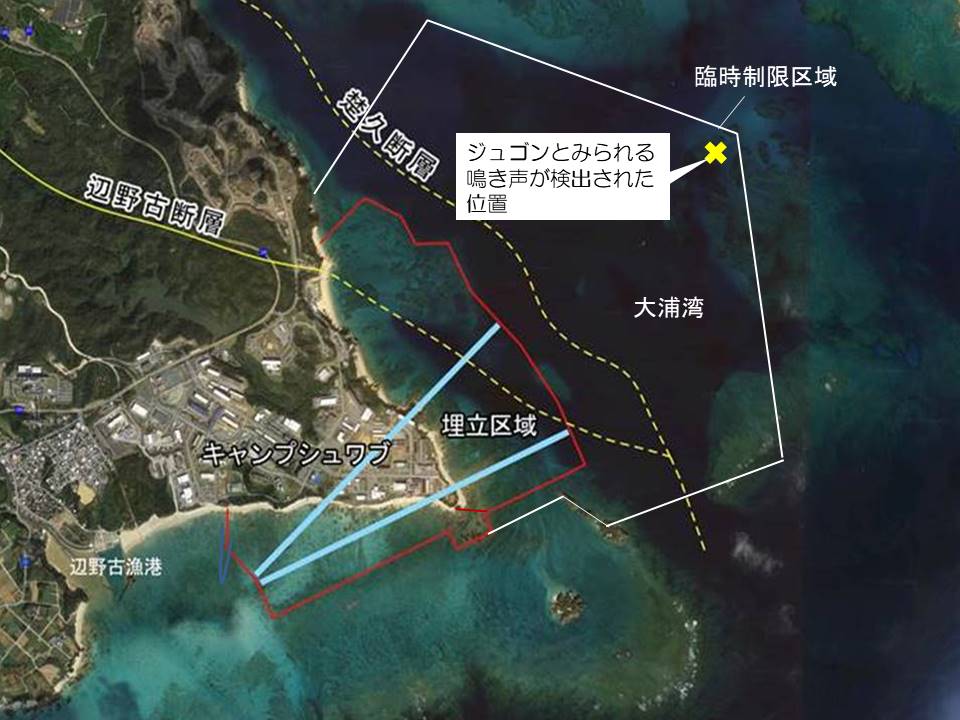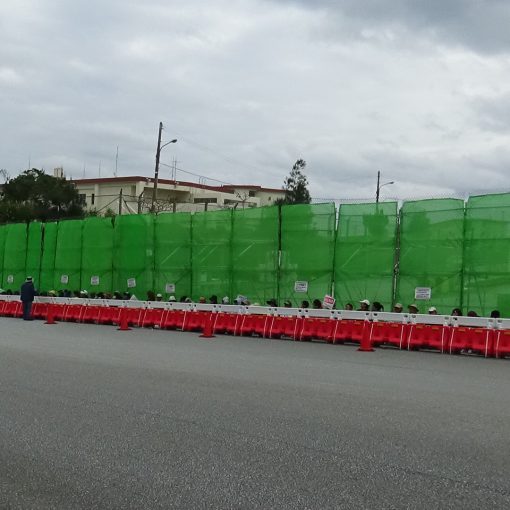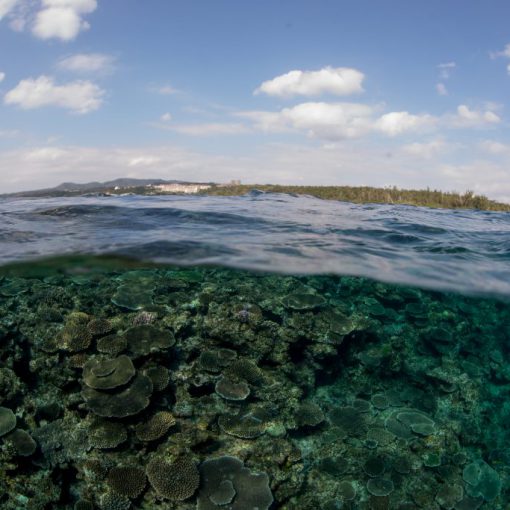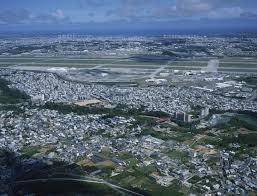It seems that the dugongs might have been returned to Oura Bay. On the 10th of April, a sound that could be the cry of a dugong was recorded by under-water audio equipment that the Okinawa Defense Bureau has set near the construction site. Crying sounds were recorded on the 11th, 23rd, and 24th of February, 19 times in total. In all cases, the cries were detected inside of the temporarily restricted area close to the construction site on holidays and weekends when there was no construction work. If it indeed turns out to be the sound of a dugong, this is the first sign that confirms the animals’ presence since November 2011.
Dugongs are listed as an endangered species, and three of them have been inhabiting the waters around the Okinawa Main Island, the northern most habitat for dugongs, in recent years. However, last year in March, one was found dead near the coast of Nakijin. In February this year, feeding tracks of dugongs have been found near the islands of Hateruma and Irabu, located several hundreds of kilometers away from Okinawa Main Island. Whether the feeding trucks were left by the remaining two dugongs remains hitherto unclear. Hideki Yoshikawa of the Dugong Protection Campaign Centre has stated that, “the protection of the Okinawan dugong receives attention from the world. First of all, the Japanese government should put an end to the construction work to assure the return of the dugongs to the Bay.”

(In front of the Camp Schwab Gate)
Only the construction of the new military base is proceeding as usual while all the large-scale public works in the Prefecture have been suspended upon the issue of “self-restraint” request by the Japanese government.
Yesterday, All Okinawa visited the Okinawa Defense Bureau and requested that, “the construction work should be suspended in order to prevent the Coronavirus to further spread.” However, the manager in charge stated that, “we have not received a notice from the contractor to stop the work” and declared the Bureau’s intention to proceed with the construction. A protester who joined us was shocked: “The government has declared the state of emergency and requested self-restraint on various operations. I do not believe my ears.” That day about 30 people participated in the protest. 208 truckloads of landfill soil were delivered in three different rounds.


(Ryukyu Cement Awa pier)
11 cars that were part of GoGo Drive hindered the deliveries significantly. They slowly moved in front of the dump trucks that were leaving the pier, hence delaying the movements of the trucks. For a while, the majority of the trucks were locked inside of the pier grounds. Also at the entrance there were about 10 people forming a protest march and raised their voices against the trucks making the deliveries. 469 loadings were brought in, 218 loadings were carried onto a cargo ship. There have not been so few loadings as this day lately.



(Motobu Shiokawa pier)
No construction work. Due to the high waves, the ships could not come ashore.
Number of dump trucks to date and percentage against the total
In order to estimate the volume of earth/sand used in landfill work, we had assumed one truckload was 6 tons. However, following advice given by media and civil engineering experts, we changed the assumption to 5 tons per truckload. Consequently, the estimated amount of earth/sand dumped is changed greatly. The estimation calculated on the basis of the number of ruckloads serves only as a reference.
Number of dump trucks which made delivery from December 2018 to the end of December 2019 114,601(1.39%)
| 11(Sat) | 13(Mon) | 14(Tue) | 15(Wed) | 16(Thr) | 17(Fri) | |
| Awa | 0 | 268 | ||||
| Shiokawa | 0 | 0 |
| Number of dump trucks ※ |
Weightt of earth/sand
※① |
Converted to volume
※② |
Volume per Total
※③ |
| 177,481 | 887,405t | 443,703㎥ | 2.152% |
※ Cumulative since Dec. 1, 2019
※① Calculated by assuming that the average truckload per dump truck would be 5 tons
※② Calculated by assuming that a specific weight of soil/sand set to be 2
※③ Percentage against 20.620.000m3, the total volume of earth and sand required for the landfill.





